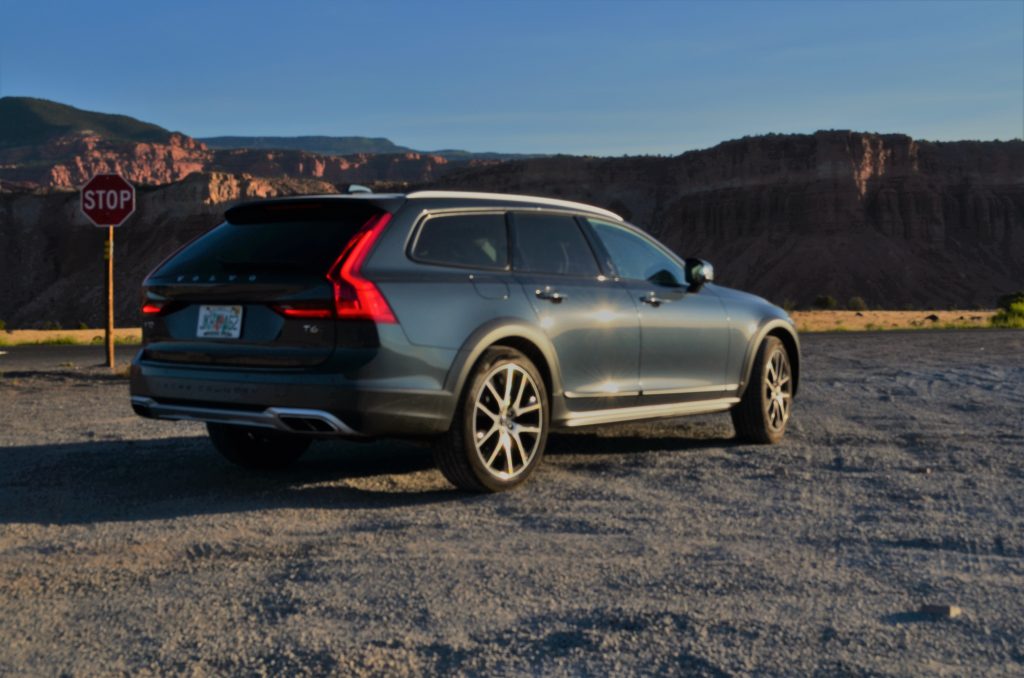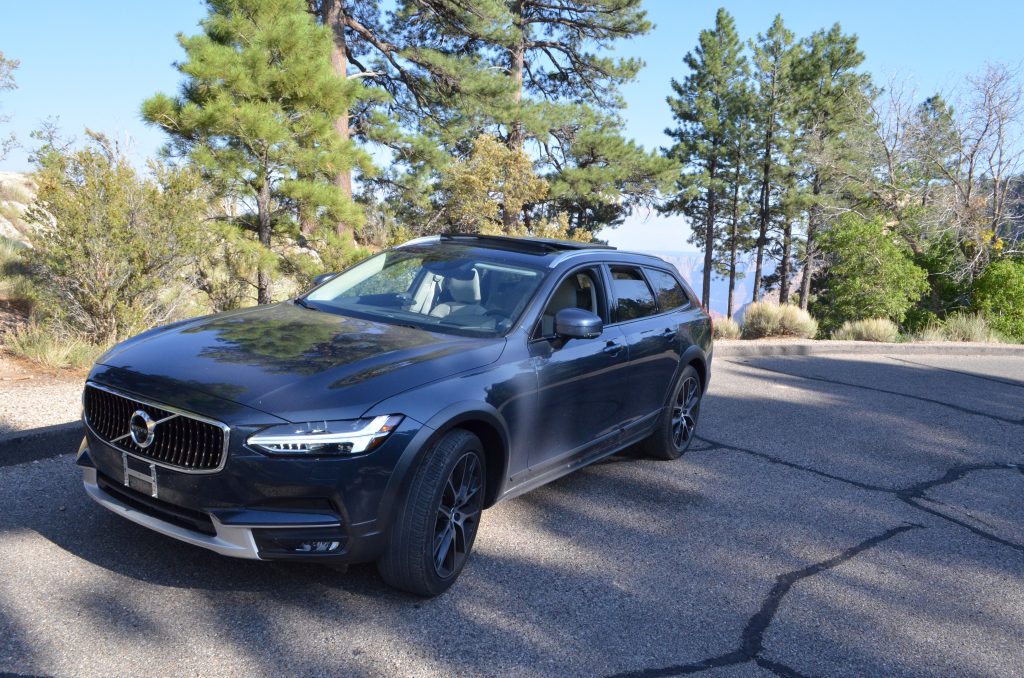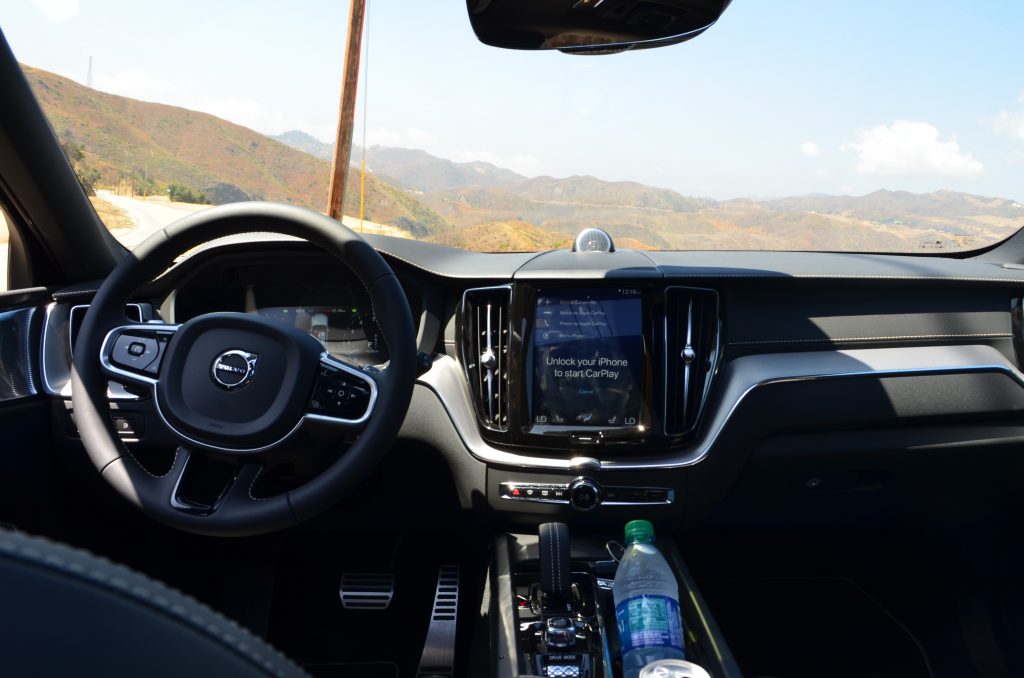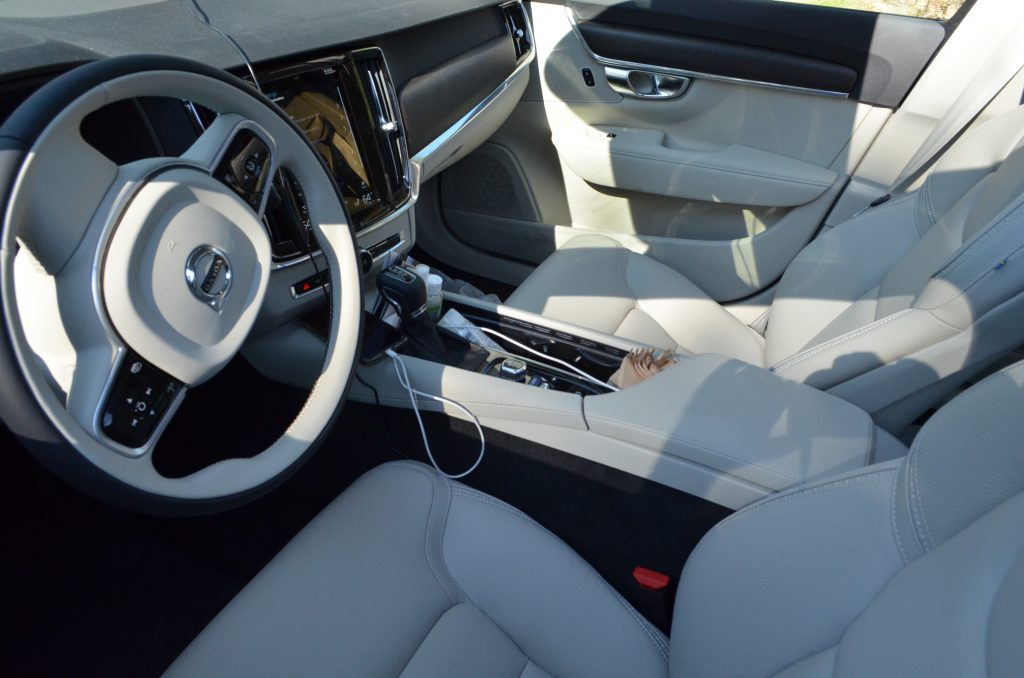The Perfect Car for Our Bizarro Pandemic Times
In a 1996 episode of Seinfeld entitled “The Bizarro Jerry,” main character Elaine befriends a group of guys who look very much like her friends Jerry, Kramer and George, except they turn out to be exactly the opposite in matters of personality, making her life a confusing pendulum swing between alternating universes where everything feels off. Like a lot of Seinfeld trivia, the concept comes from Jerry Seinfeld’s boyhood fascination with the Superman comic book series, where the character Bizarro was the inverse of Superman and became his greatest nemesis.
And that brings us to now. 2020’s been a year: COVID-19 wrecked like the ruined what was left of civilization – ok, but almost right? – and if that wasn’t enough, don’t worry! The Earth is basically now always be fire , the economy is comatose, and there was just the craziest, most batshit version of America’s already-bananas, never-ending presidential races. It all kinda came out of nowhere. Ok, not all of it – but, most of it? Point is – it was a genuinely Bizzarro year if there ever was one.
Which is why it’s been the COVID-year trend to use our downtime to escape outdoors, distanced from strangers as can be. So Summer 2020 obviously became “the summer of the road trip.” And yours truly rarely says no to a good road trip, especially to places as breathtaking as Zion and Bryce Canyon National Parks (with a pop-over to the Grand Canyon cause why not?)
To get there, we jumped at the opportunity to sample a new (to us) whip: the 2020 Volvo V90 Cross Country, a toughed-up station wagon that seems to be the only way Americans want to buy these increasingly rare (and premium) but useful family transport. Sadly, save for these assorted Allroads, CCs, and Outback/trek/trak thingys – wait, don’t forget the Buick Regal TourX! Cause GM did, as 2020 was its swan year – it seems like only auto journalists proclaim the greatness of the station wagon over the sea of crossover sameness that most folks drive now. Don’t get me wrong, I love me a good SUV. But most people aren’t driving SUVs. They’re driving lame crossovers, which, yes can be good and definitely more comfortable on the road than an SUV like Wrangler or Branco or Benz G65 AMG. Obviously. They’re buying CR-Vs, RAV4s, Rogues, Escapes, Equinoxes, X3s, Q5s – blah blah. Ok the hopped-up versions are ok, but still – yeah I’d rock an SQ5 or SQ7, cause they’re more interesting – but what about that is actually an original statement? Nothing. Everyone wants to look tough, no one wants to actually put up with what it takes to be tough. Car-wise, in this case. It’s kind of like Instagram and looking like you have money.
So for my dinero? Well, I agree with the journos – I’d rather drive a cool wagon than a lame crossover (aka almost all crossovers). The 2021 RS6 or the monstrous AMG Benzes would be my choices, but, naturally, they don’t come very cheap. And they tend to be rare. The Jag XF Sportbrake was hot, but now discontinued. And the Porsche Panamera Gran Turismo will also prove elusive. So if it’s a wagon in the USA, your choices are pretty limited to gussied-up wagons from Europe or, in one case, Japan. Hell, even Mercedes is getting in on the action – the 2021 E-Class won’t be available as a “regular” wagon stateside unless you go AMG. Otherwise, you’re getting an E-class All-Terrain.

And if we’re to choose amongst the currently available, more “down to earth” transport, I’m happy to report I’d still take this Volvo over any comparable crossover. For one, look at it. Forget the boxy refrigerators of the 70s and 80s Volvo estates. This thing is beautiful. Okay, the low-slung, non-plastic cladded( and special order only) V90 wagon fully qualifies as drop-dead gorgeous, but this CC is a close runner-up. What’s more, it’s very well-assembled – a Volvo trademark – and premium-feeling materials, like leather, leatherette and soft-touch plastics, cover almost every surface you’ll touch. Its seats are superb, its backseat can comfortably fit two grown adults, and its trunk measures [ ]. Indeed, the spacious and appropriately modern minimalist Scandinavian interior is a swell place to spend time, especially in the cream colored leatherette of our Denim Blue example – ours only lacked ventilated front seats as far as de rigeur luxury equipment (note: you’ll want this in Zion at the height of summer).

There’s more. The CC can go over tougher terrain than you’d think, not just because of its 2-inch higher ground clearance vs. the standard V90, but also its Off-Road mode that turns on full all-wheel drive, softens the shock absorbers, and raises the car an inch or so on its stilts. Though the driver can’t control ride height independently, there is auto leveling for the rear suspension, in case you’re like my dad and set out to build a DIY rock wall by loading quarry-blasted boulders in the back (unclear if they were for the taking). Sadly, though, our ’88 Mercury Sable wagon did not have an auto-leveling rear suspension; guy killed the rear shocks. Then again, the ol’ Sable wasn’t anywhere close to the price of admission here – $55,545 to start. So hopefully this Volvo’s Aisin 8-speed auto transmission lasts longer than that Mercury’s did (6 years).
Though it ain’t cheap, the good news is that most everything you’ll want comes standard (if only German metal worked like this). Our car’s Denim Blue Metallic exterior added $645 and the stunning dubs (20” rims to you, grandma) added another $800. Our car was also equipped with the only package you’ll likely need: the $1700 Advanced Package, which gives you a color Head’s Up Display that’s easy to adjust and doesn’t get glare out in the baking sun; a 360-degree camera system, which in the sticks can let you see what’s ahead; plus more LED illumination in the interior. The HUD is key; coupled with the Volvo’s semi-autonomous (“Pilot Pro”) system and distance-based cruise control, the car kind of just makes long trips melt away. Just remember to touch the steering wheel every 40 seconds or so, or it’ll shut off. So, you know…don’t fall asleep.
That’s right – even safety-obsessed Volvo is on the driverless car game. Who isn’t. Even before the pandemic turned the rest of the world upside-down, the auto industry was already in a state of massive churn. Cars have become rolling computers, all of a sudden there are approximately 400 electric car startups, you can subscribe to a brand’s selection of cars without buying a single one (including Volvo’s) – the list goes on. And while traditional carmakers are adapting to the changing reality, some are doing it with more success than others.
We’d put Volvo in the former group. They are on a legitimate roll these days. A clever and – in hindsight, prescient – controlling investment from Chinese automaker Geely at the height of the Great Recession seemed dicey at the time. The Western markets hadn’t really heard of Geely, for one, and Ford had owned Volvo prior to the Great Recession, and even with a massive R&D budget the mothership failed to properly invest in Volvo (and Jaguar and Aston Martin, which they also owned at the time). Think the early millennium S40 and C30. Hell, if one of the artists formerly known as the “Big 3” couldn’t straighten things out at Volvo, how could this upstart Chinese company nobody ever heard of?
Well, Geely’s founder, Li Shufu, didn’t become one of the richest people in China by shying away from a challenge. He founded the company in 1986, borrowing seed capital from his family, and initially began to make refrigerators in a newly prospering China. Smart move – millions of folks could finally afford one. That success led to his takeover of a failing state-run motorcycle company. The pivot to cars was a natural next step. The guy does indeed seem to have the golden touch. And in perfect irony, it turns out that compared to Geely, then-CEO Jacques Nasser’s Ford proved themselves to have all the investing prowess of Jared Kushner. The opportunity to buy Volvo represented new heights – a premium carmaker known the world over, and operating in North America and Europe, its wealthiest markets.
Yes, the Chinese have long planned to expand into America and the EU. And still do. And will. But the acquisition of Volvo – if done right – could provide a lucrative backdoor right into the West without having to build a brand from scratch and where the margins are higher.
Li’s seemingly golden touch showed how shrewd this investment was. Within short order, Volvo used Geely’s investment to shore up their dated product line as best they could, while the Swedes invested the bulk of Li’s capital in the development of an honest-to-goodness, well-engineered and widely scalable platform (Scalable Product Architecture, or “SPA”). SPA would come to underpin most of Volvo’s line – from the 60-series cars & SUVs to the 90-series full-size vehicles (including the V90 Cross Country tested here). The SPA debuted globally back in 2015 with the second-generation XC90, Volvo’s largest SUV offering (and soon to spawn an even larger variant. And before you go thinking it’s Chinese and therefore cheap, note that the SPA was rightly developed entirely in-house at Volvo in Gothenburg, Sweden.
SPA accommodates a wide range of powertrains: diesel (EU/ROW only); a 2.0L turbocharged gasoline four-cylinder, labeled “T5”; a turbocharged and supercharged version of the same four (“T6”), and the so-called “T8,” which is the aforementioned “T6” plus two electric motors, charged by an 11.6 kWh plug-in battery pack. The T8 represents the highest-end powertrain option on all Volvos save the XC40, with a price to match. Unfortunately, as much as we love the idea of the T8 on paper –and the fact that one can cruise emissions-free around town for 20 miles – the engineering required to make all this jazz work coherently is NASA-level hard, and we’re not quite sure Volvo nailed it in this case; it’s quite good, the T8, unless you drive like an enthusiast, in which case you’ll be disappointed with the transmission’s programming logic. But we’re not talking the T8 here. Here, we drove the non-hybridized T6 version, and it’s probably the powerplant we’d recommend for most folks due to the T8’s wonky systems tuning.
The basics here? Darn tootin’. The structure is super glue tight, like Volvos have (almost) always been, and though our test car here only showed 1100 mi on the odo, over the course of 9 days we put another 2000 on top of that over an epic Los Angeles to Southwestern Utah road trip. The drive covered everything most owners are likely to throw at a $60K vehicle: smooth, open two-lanes, crowded interstates, rock-strewn, washboard, rock-and-hole filled dirt paths. All along, the only rattles the Volvo seemed to exhibit were the sloshing of the iced coffee cups in the cupholders.
More good things: the interior highlights Volvo’s upright and firm yet super-supportive seats (check the mini Swedish flags on the backrests) which gives you 8-way power adjustment and three-position memory – but you likely won’t use this feature more than once. That’s because Volvo’s seats are not only all-day supportive, but they’re also amongst the best in the industry for long-term comfort no matter what body type you carry. The V90’s sublime seats alone make their vehicles worthy of consideration for frequent road-trippers; they’re up there with the best stock car seats on the market.

That solid structure also laughs off ruts, potholes and crappy pavement, a feat considering the car rides on big boy rims (aforementioned dubs/20s) and all-season Pirelli Cinturato P7 tires – which are OK noise and grip-wise, though obviously not ideal for either backroad barnstorming nor exploring local fire trails. . (If there’s one thing we want to emphasize, it’s the importance of the tires on your car to its overall feedback and responsiveness. Most new car dealers can you’re yours out if you’re willing, and sometimes it may be worth it). Mind you, the P7 is a good all-season, it’s just compromised, as all-seasons tend to be. That said, even with your trusty scribe blessed with a lead boot for a foot, the V90 averaged an impressive 23.9 mpg on the required 91 octane over 2000 miles of mixed driving. So, not too bad at all – and this is the one without battery electric assistance. On the efficiency front, then, Volvo’s gamble seems to have paid off.
Most owners won’t call for more power, and will likely do a bit better than did we – figure 25-27 mpg overall is easily achievable if you’re doing a mix of city and highway driving. The T8, of course, will achieve better numbers; (we would not recommend the T5 on a car this big). Luckily, the 8-speed Aisin automatic gearbox is mostly good at finding the right year to make the most of the engine’s 316 horses and 290 lb-ft. of torque, though even with the supercharger helping down low, there’s still some initial lag and hesitancy to downshift when you floor it. The Aisin is good, and hopefully proves typical Toyota-reliable (Aisin is a spin-off supplier from the original Toyota conglomerate). That said, the Aisin is a bit short of the ZF 8-speed’s class-leading, all-around, always-in-the-right-gear excellence.

Drawbacks? Well, there are indeed downsides to having a four-pot for a heart, especially when said car weighs in at over two tons dry. On top of that, generally speaking, 4-cylinders just ain’t gonna make pretty noises unless they’re lovingly tuned by Honda, BMW or Porsche, and sadly that’s also true of the Volvo’s mill. It can sound a little gravely as you get up in the rev range; though it’s never too intrusive or overpowering, and the cabin is well-insulated from noise in general. It just lacks any sort of distinctive or wonderful exhaust note – and often that rush of effortless torque – that bigger engines can easily produce. That said, the V90’s ride is quite good, especially for something with low-profile 20” rubber, but the car is a little stiff over potholes and expansion joints. Don’t worry though, the superglue tight structure doesn’t seem to mind. Your kidneys might be a different story, but you can tune the shocks to be a bit softer in Comfort or Eco modes. And this V90 is clearly tuned more for comfort than sport – but that’s not all a bad thing. Its demo is much more likely to value this than sheer performance.
The V90 CC starts at $55,945 for the 2021 MY (we drove a 2020). The good news is, there aren’t too many features that won’t come standard, or that you’ll miss. The blind spot monitors are excellent, with amber notifications in the mirror as God intended, and the forward collision warning and emergency braking system, also standard, performed flawlessly when we bit our lips and tried to launch at stationary objects or simply had slower-moving traffic up ahead.
Off-road, as mentioned, is also a focus of these toughed-up wagons, and here the Volvo will limit itself to 5mph – go over and it will default to Comfort. We wish it could’ve maybe gotten a little friskier (8mph?) but after all it is a car, not a truck, and they likely wanted it to survive rut-strewn trails over and over. This is a good thing.
For an extended, almost two-week, 2000 mile trip, the Volvo proved an able, almost faultless companion. If you’re in this general price bracket, I’d heartily recommend it over any of the crossovers you’re likely shopping. Even if we maybe wish it had a few more cylinders 🙂
-BD
